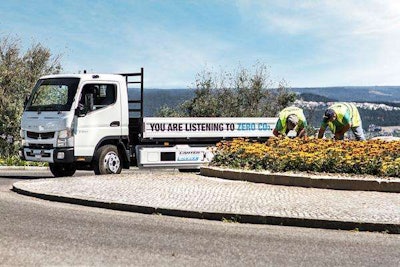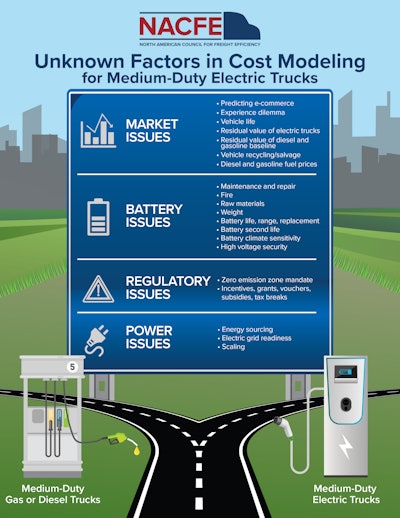

The most recent report from the North American Council for Freight Efficiency (NACFE), Medium-Duty Electric Trucks: Cost of Ownership, says because the field history is minimal, total-cost-of-ownership and cost modeling for battery electric vehicles involves a number of projections, estimates and guesses.
Focusing exclusively on Class 3-6 trucks, NACFE Executive Director Mike Roeth says the group wanted to understand “the benefits and challenges of electric truck adoption over gasoline and diesel trucks,” but because so few examples exist in the market that became a challenge “because there are so many fleet operational variables in play when you switch to electric trucks.”
While the primary justification for EVs is to achieve zero-emissions objectives, savings from maintenance costs are among the highest proposed benefits when making the switch to a plug-in powertrain. But they are also among the biggest unknowns because Roeth says those cost estimates haven’t been validated.
Even with all the unknowns, Roeth says the potential of electric trucks isn’t going to wane.
“Medium-duty commercial battery electric vehicles … are not a fad,” he says. Freight electrification is still in its infancy on the highway but Roeth says there is potential for it to become a revolutionary technology – like diesel power was to the locomotive 80 years ago.
The report focuses primarily on local delivery fleets since those segments aren’t deterred by the limited range offered by most electric trucks and e-commerce is increasing the need for medium-duty last mile deliveries.









